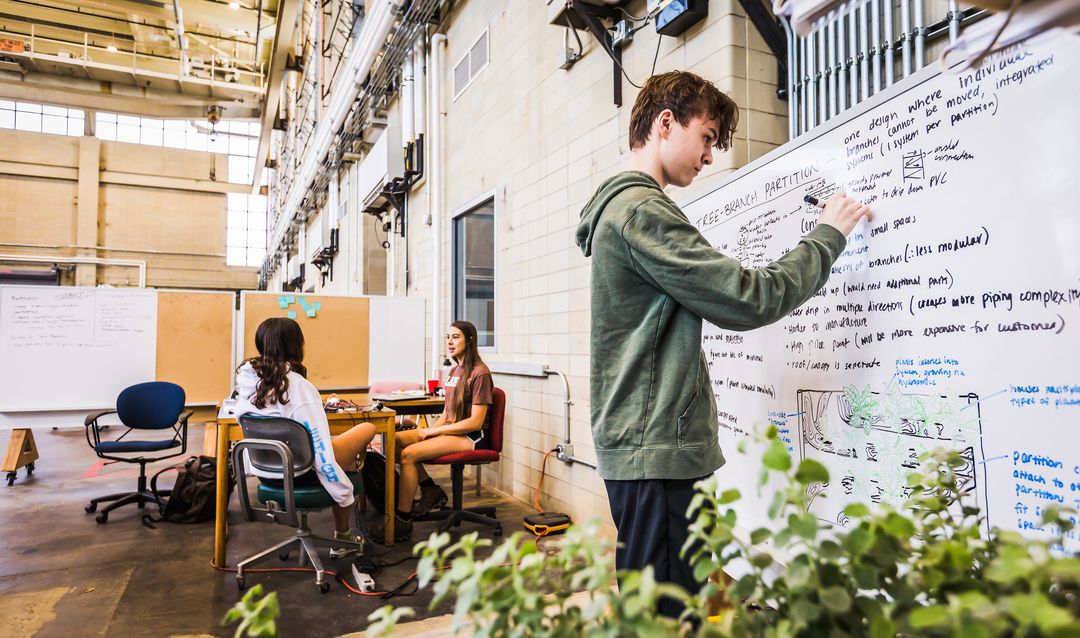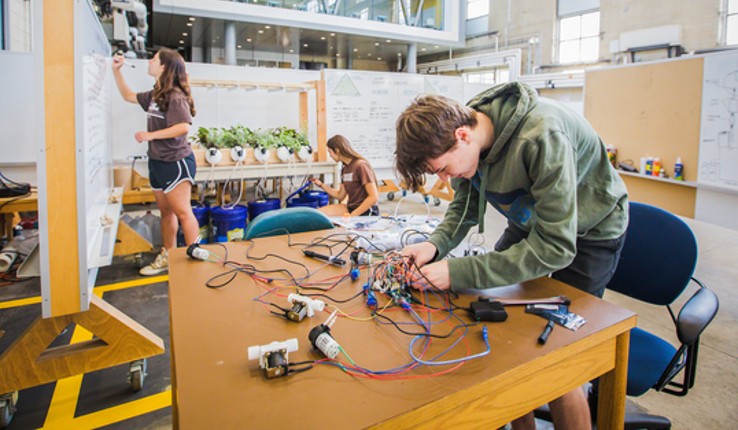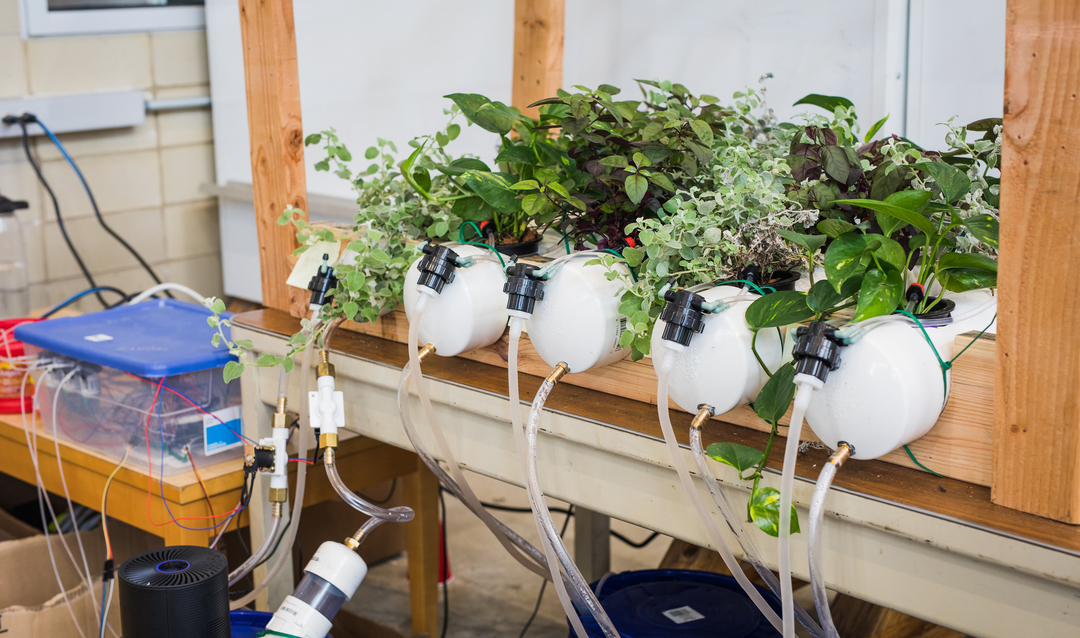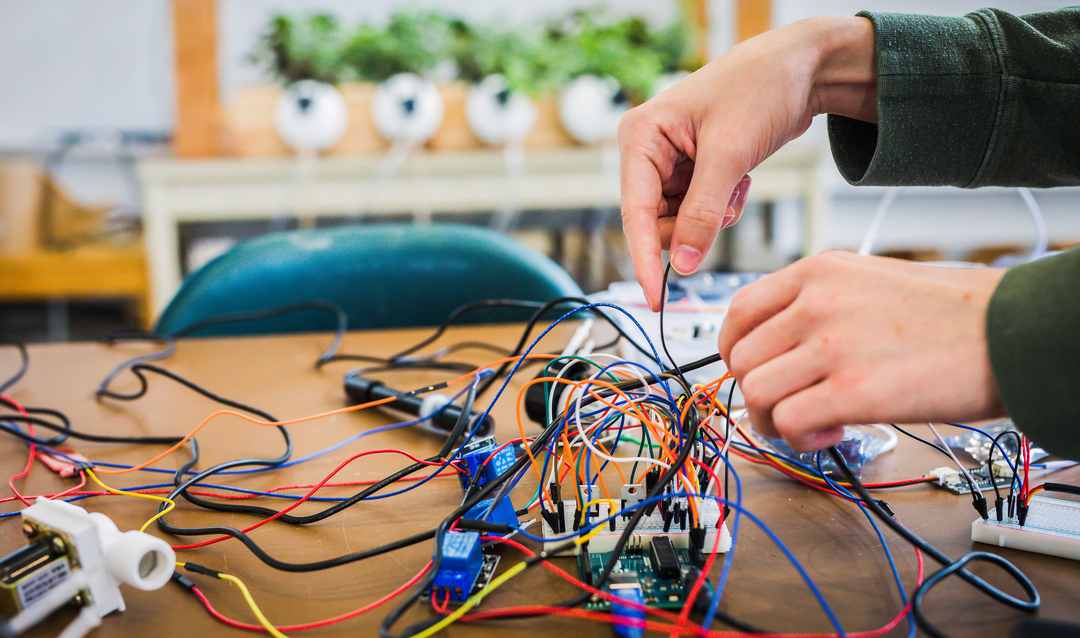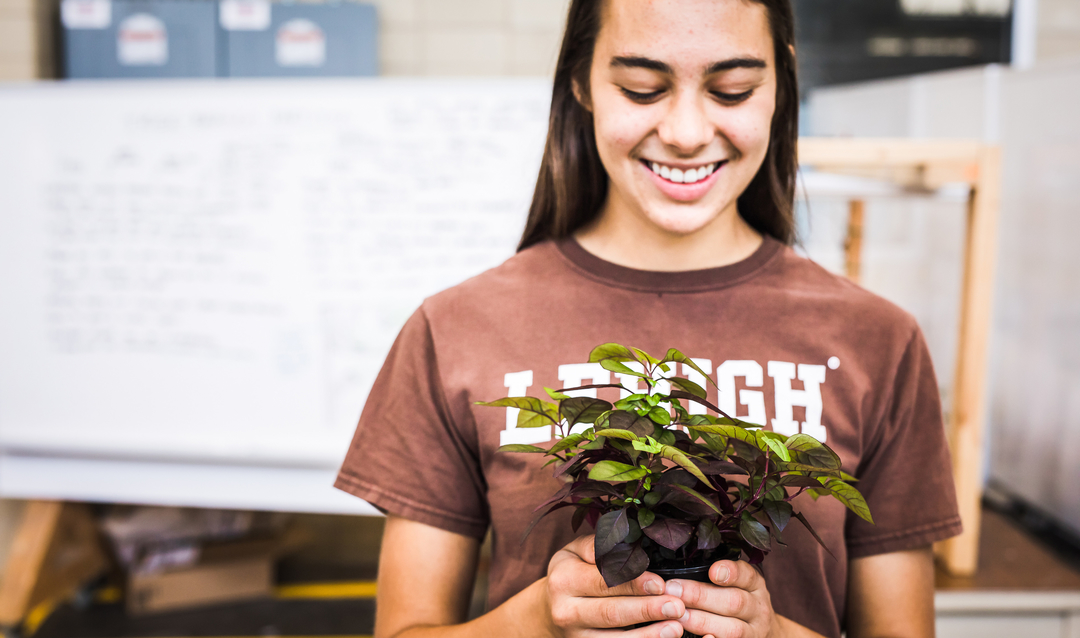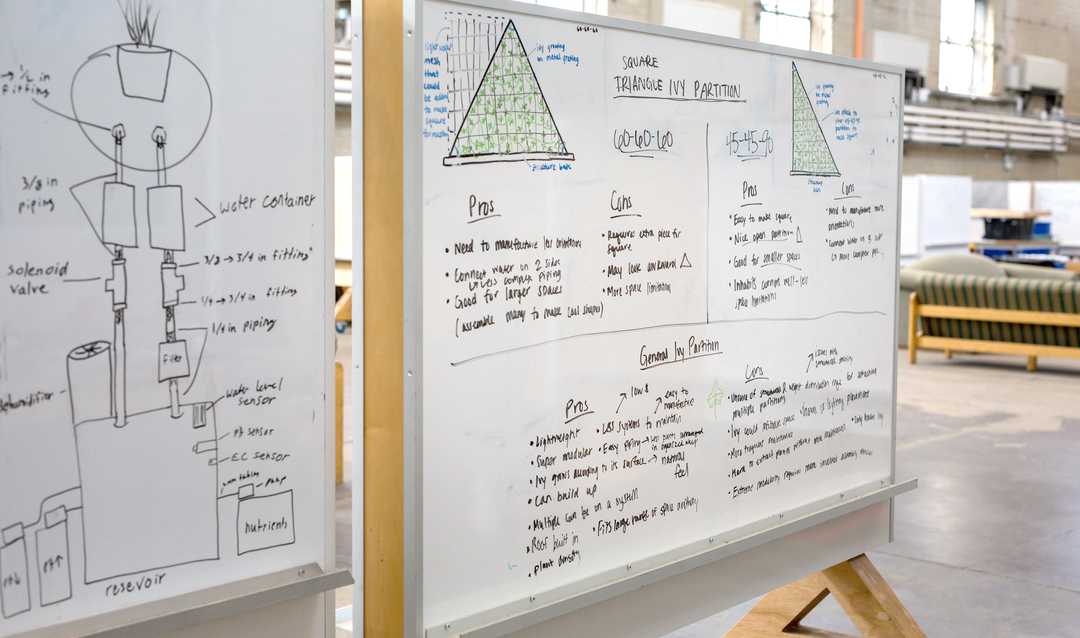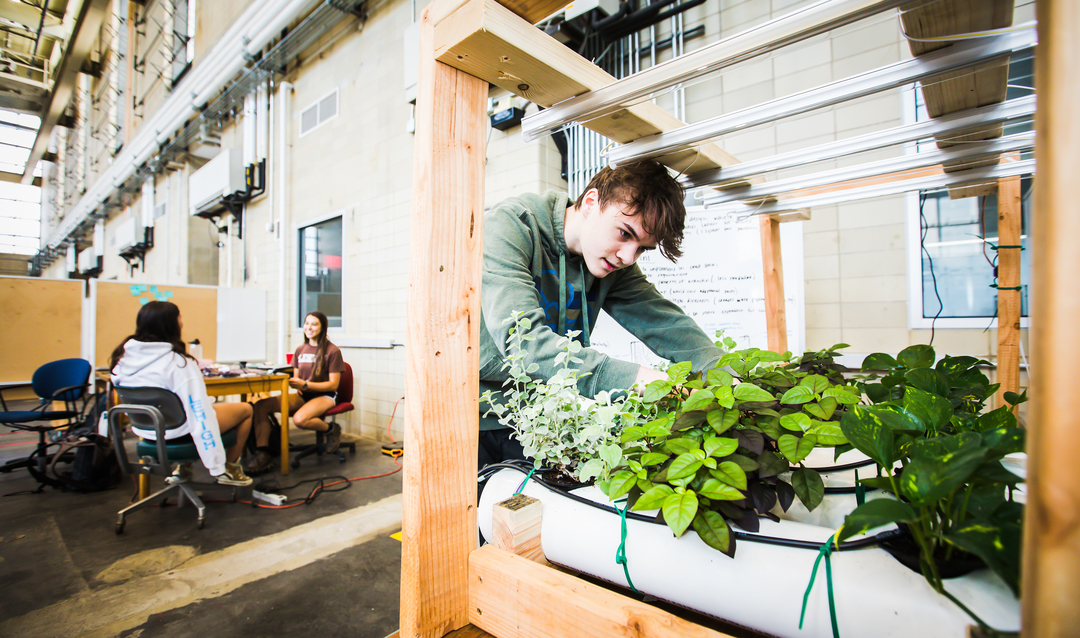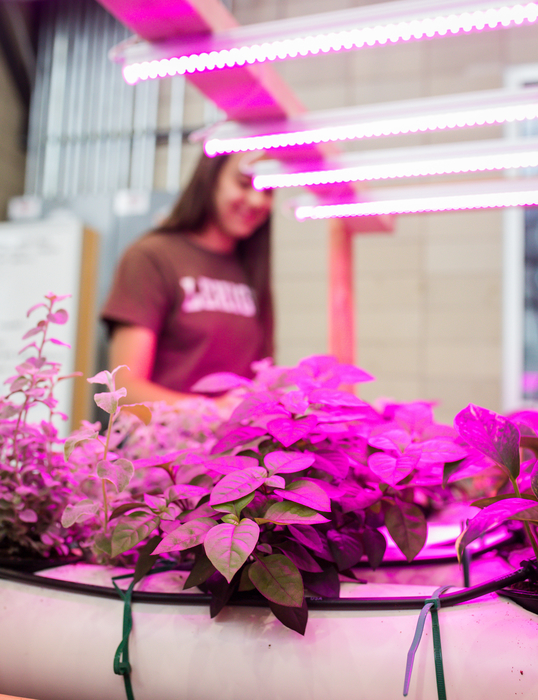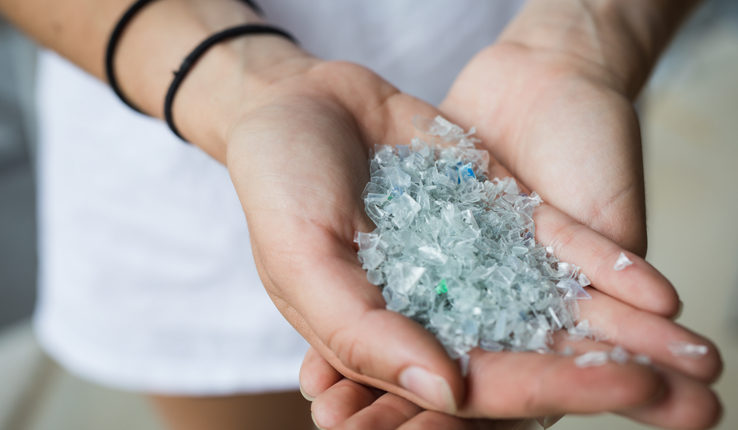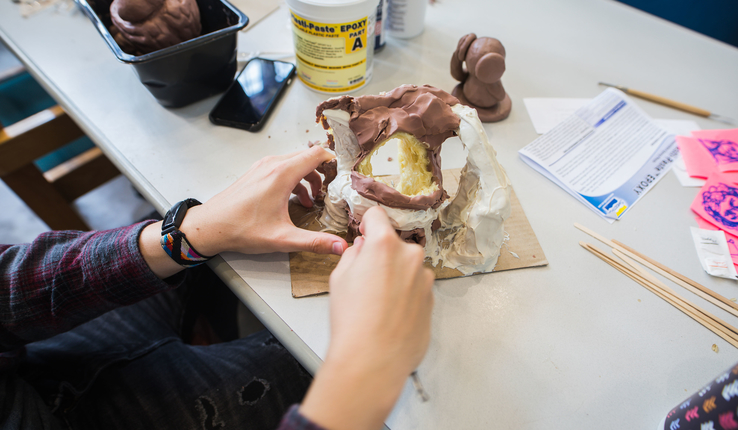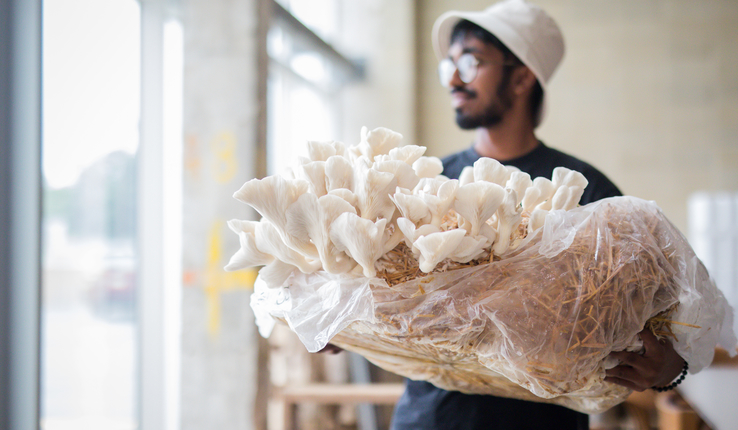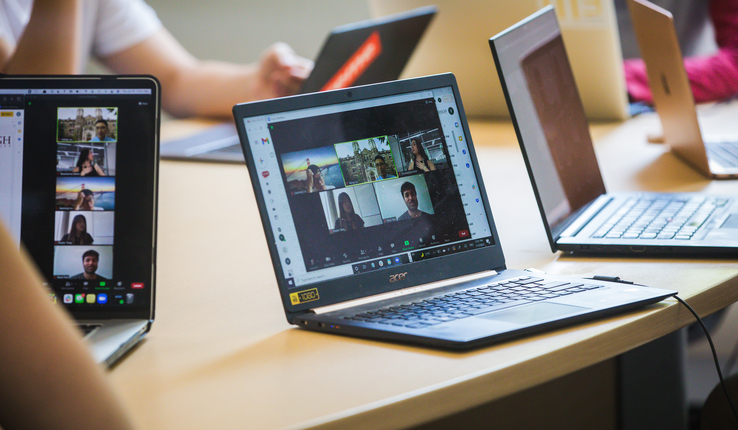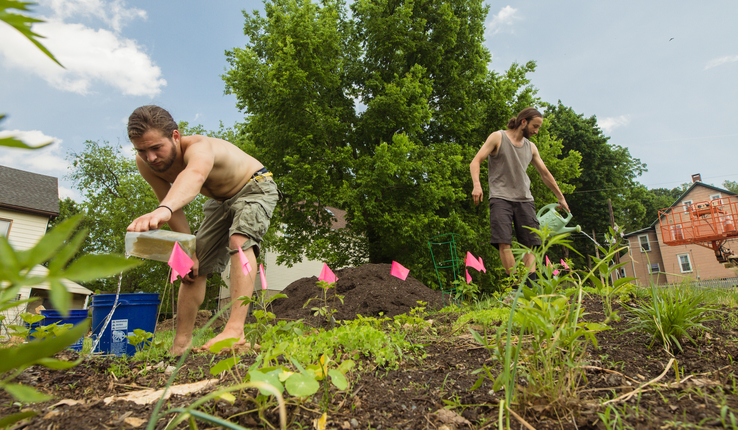The Mountaintop Summer Experience is unique in that it allows students to focus solely on their project full-time as opposed to a class that only meets a few hours per week. There is also no other course work, or distractions, which exist during a typical semester. That focus is one of the most valuable parts of the Mountaintop Summer Experience, according to Brian Slocum, managing director of Lehigh’s Wilbur Powerhouse and Design Labs and a co-mentor for EcoRealm Environments.
“They can pour their heart and soul and all of their focus and energy into something,” Slocum says. “They see an ownership of the project in a way they don’t in most other things in their academic careers. And it becomes the project itself that drives them—not a grade or an artificial deadline—but rather a desire to make a difference and see their ideas become a reality. Whereas a regular class assignment would be a blip on the radar for these students, these projects consume them.”
‘Creating a Real Product’
The idea for EcoRealm Environments was born in a brainstorming session for potential CSIF project ideas. Slocum and Katharine Targett Gross, Lehigh sustainability officer, met with Khanjan Mehta, vice provost of Creative Inquiry and director of the Mountaintop Initiative, and Bill Whitney, administrative director of Creative Inquiry, and were particularly excited about erecting a living wall—panels with plants growing on them in a medium such as water, stone or soil—in a building on campus.
As often happens with these projects, however, there was a major pivot from the original idea once students took over, Slocum says.
In spring, a team consisting of Sebastian Wick ’24, Evy Rahmey ’23, Giavanna Gast ’24, and Ella Fabozzi ’22 found that many living walls already exist, but must be installed during the construction of a space or building. The students didn’t find any products that could be installed retroactively. Their new goal? To create a low-maintenance system that could be added to existing libraries and offices.
“We realized a lot of places don't have the funds to renovate an entire building and put in new plants. They need something like this that's more accessible and cheaper,” Wick says. “We’re trying to make an easy option for institutions such as Lehigh, or corporations, or maybe even hospitals, to bring plants into buildings, especially considering how valuable they are in terms of mental health.”
At the start of summer, Wick, Rahmey and Gast began working on a design based on a versatile, self-maintaining hydroponic system that could act like Legos, easily connecting multiple systems to form a working space for consumers.
They knew what they wanted. What they didn’t know, Gast says, was pretty much everything else. The students had to figure out the type of plants to use and the system’s design, and they had to create the system’s technical aspects. The team also had to figure out the demand for the product. They had just begun to define their primary users and customer segments, according to Gast, so they had not spoken to many possible consumers.
“This was a really big thing for the summer,” Gast says. “Understanding ‘OK, well we have this idea, but it's very conceptual. How do we actually go from this idea to creating a real product?’”
Most of the summer, Wick says, was spent building a system, performing hands-on testing and then figuring out a business model. They learned how hydroponics work, built an initial drip irrigation system and then tested a hydrofilter for how often the water needed to be filtered.
Wick says the team hopes to have a system built in 2022 that is ready to be sold to the public. It’s a quick turnaround but this is a group of students Slocum refers to as his “Dream Team.”
“These students possess the drive and the passion to make this project successful. They have a willingness to take a deep dive into all of these disparate topics and emerge experts. I don’t think they have failed to execute on any level,” Slocum says. “And they just keep coming back for more and more and more and more. They’ve also had an amazing development as a team. They’ve really clicked and become a cohesive group in a way you don’t always see in teams. ...All of them believe in the project—I believe in the project—and the end result is a project that evolves in this incredibly symbiotic way. It is such a joy.”
Seeing each team member’s transformation and growth as both an individual and a student is something else that makes the experience special for Slocum.


